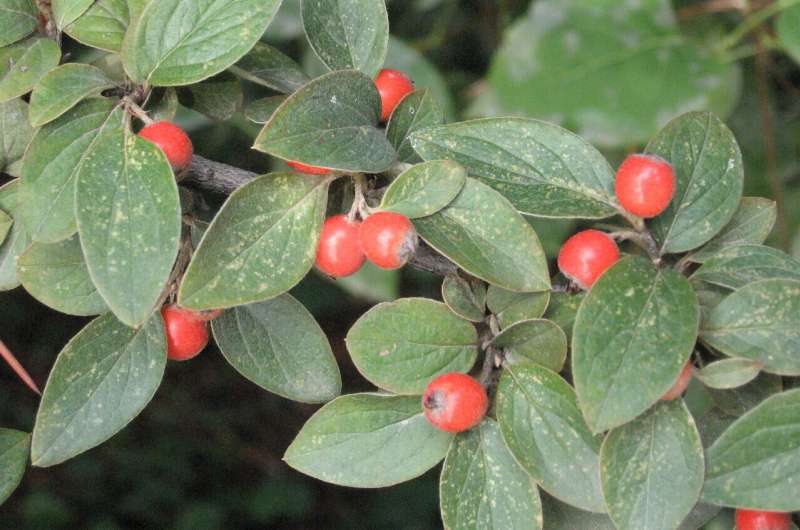Cotoneaster franchetii. Credit: A. Barra /Wikimedia / CC BY 3.0
A combined team of researchers from the Royal Horticultural Society and the University of Reading has found that the Cotoneaster franchetii (also known as Franchet's cotoneaster) hedge plant is effective at filtering automobile air pollutants. In their paper published in the journal Environments, the group describes experiments that involved testing different types of plants to find out which were best at filtering air pollution next to roadways.
The work is part of a 10-year ongoing research effort meant to better understand which plants might be the most useful in urban settings. They have been testing bushes, trees and shrubs that are commonly planted in urban areas to see which are the most effective against flooding and air pollution. Over that time span, they have tested a wide variety of hedges to see how well they can soak up air pollution generated by cars and trucks and have found that those with dense canopies and rough and hairy leaves, such as cotoneaster, are the most effective.
The team found that cotoneaster was 20% more effective at pulling pollutants out of the air on busy street sections than any other hedge that they studied. They acknowledge that they found little difference between hedges when testing on streets that did not have much traffic. They suggest this indicates that using different kinds of plants in different areas would make sense, both for home owners and city or town planners. They found that over the course of one week, a single 1-meter-long cotoneaster hedge was able to clean auto pollutants over the course of a 500-mile drive.
Because of its unique abilities, the researchers suggest that homeowners who have property abutting busy street sections plant cotoneaster to reduce the amount of pollution they are inhaling into their lungs every day. City planners could do likewise to reduce overall pollution levels in cities.
The researchers also note that many plants have been found to be beneficial in handling urban environmental issues—many types of shrubs have been found to reduce flooding, for example, and vines climbing on buildings have been found to help keep temperatures inside lower.
More information: Tijana Blanuša et al. Evaluating the Effectiveness of Urban Hedges as Air Pollution Barriers: Importance of Sampling Method, Species Characteristics and Site Location, Environments (2020). DOI: 10.3390/environments7100081
© 2021 Science X Network























